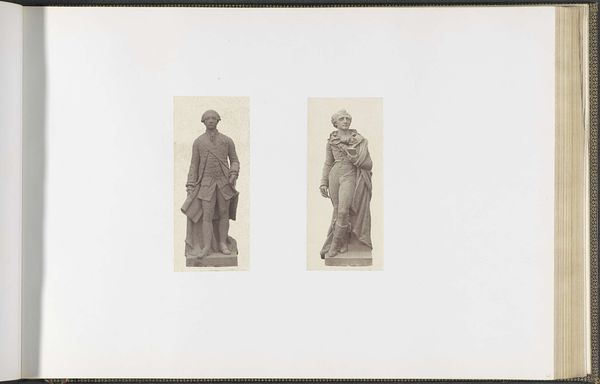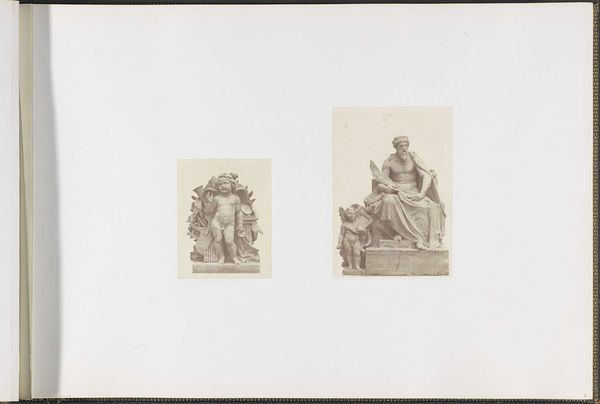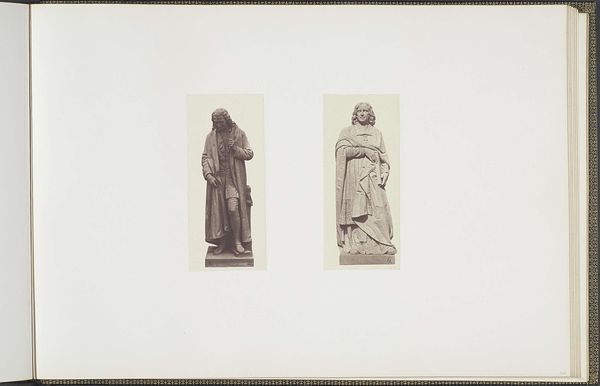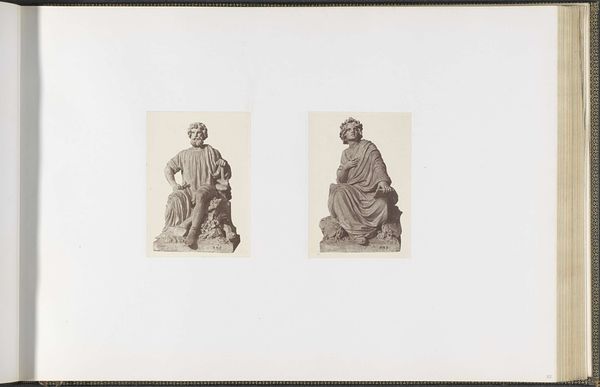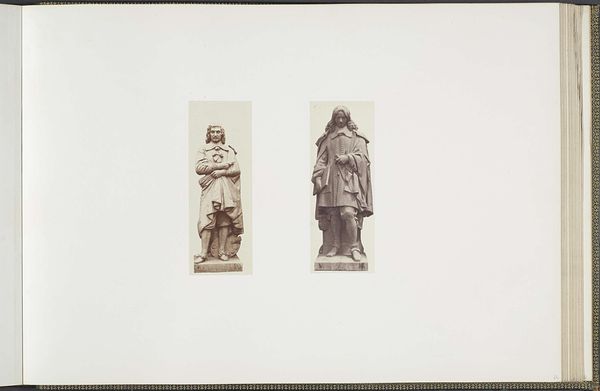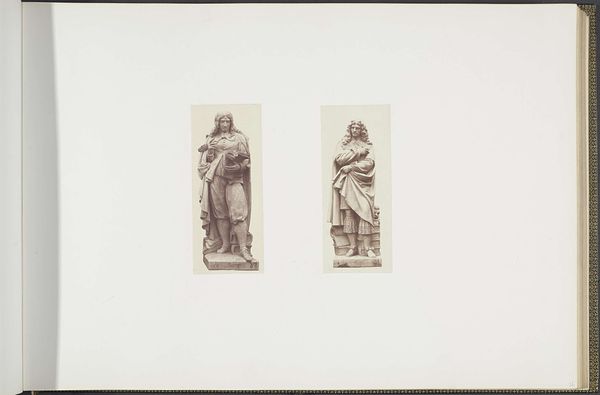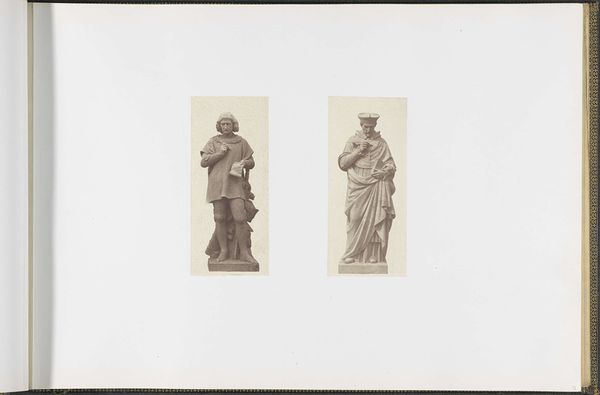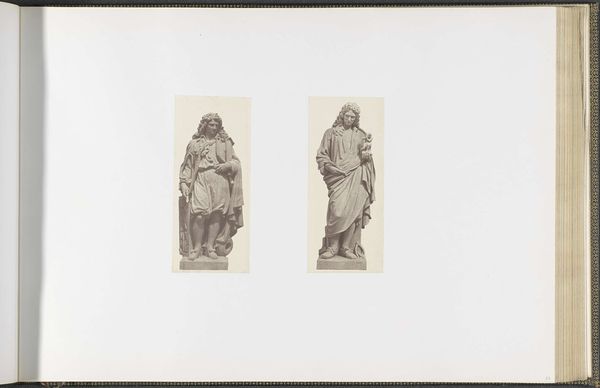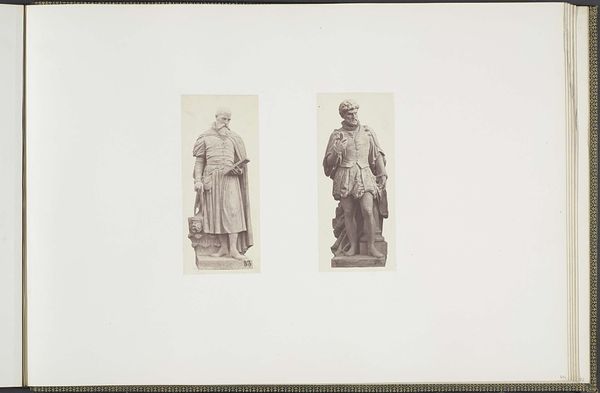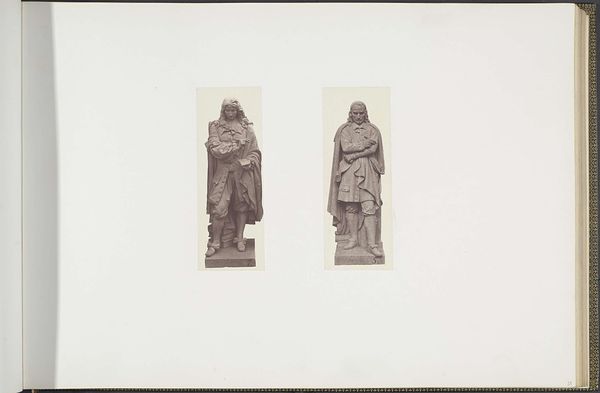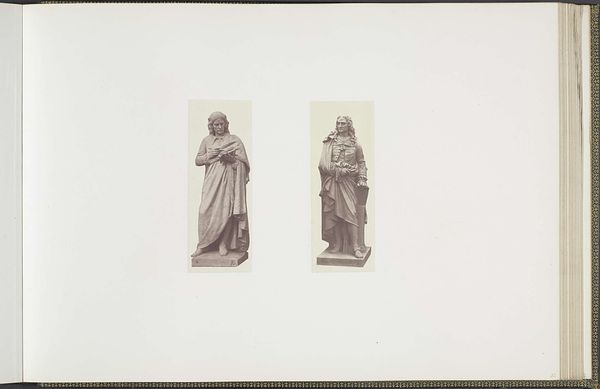
Gipsmodellen voor beeldhouwwerken op het Palais du Louvre: links "La Science" en rechts "L'Industrie" door Elias Robert c. 1855 - 1857
0:00
0:00
photography, sculpture, albumen-print
#
portrait
#
neoclacissism
#
figuration
#
photography
#
sculpture
#
academic-art
#
albumen-print
Dimensions: height 378 mm, width 556 mm
Copyright: Rijks Museum: Open Domain
Curator: Here we have an albumen print by Édouard Baldus, dating from approximately 1855 to 1857, currently residing in the Rijksmuseum collection. The photograph documents plaster models, created by Elias Robert, for sculptures intended for the Palais du Louvre. Editor: My initial reaction is one of curious stillness. Despite being images of sculptures meant for a grand palace, they feel intimate, almost like studio portraits of pensive figures. The texture in the photograph is wonderfully rich. Curator: Indeed. Baldus's technique, employing the albumen process, lends itself beautifully to capturing the subtle gradations of light and shadow on the plaster surfaces. Notice how the arrangement and the framing serve to present each sculpture distinctly. Editor: The composition certainly draws attention to their allegorical qualities. We have on the left, "La Science," personified with the torch of knowledge, and on the right, "L'Industrie," portrayed in a somewhat contemplative posture. I find myself pondering the societal values embedded in these figures. Were they intended to convey a certain aspiration, a promotion of knowledge and industriousness within the context of the Louvre's artistic prestige? Curator: Absolutely. Neoclassical sculpture, of which these models are representative, often served didactic purposes. The Palais du Louvre, during this period, was undergoing significant architectural expansion and re-conceptualization. Placement of such allegorical sculptures was no accident; it was a deliberate act of instilling specific ideologies. Editor: It's intriguing how a photograph of plaster models manages to convey so much about the cultural landscape of mid-19th century France. I imagine seeing the statues on the façade and immediately aligning it with our progress. Curator: It highlights the fascinating interplay between art, power, and public perception. These sculptures, rendered with Academic precision and captured through Baldus's lens, offered visual affirmations of national progress. Editor: In this way, Baldus’ photograph moves beyond mere documentation, and becomes part of the ongoing story of their commission. Curator: Precisely. A perfect example of historical circumstance elegantly revealed through form. Editor: This reminds me of art's power to embody ideals within civic aspirations.
Comments
No comments
Be the first to comment and join the conversation on the ultimate creative platform.
